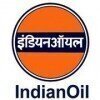
i
Reliance Industries
Proud winner of ABECA 2025 - AmbitionBox Employee Choice Awards
Filter interviews by
Reliance Industries Control & Instrumentation Engineer Interview Questions and Answers
Reliance Industries Control & Instrumentation Engineer Interview Experiences
2 interviews found

(6 Questions)
- Q1. Why 4-20 mA Preferred over 0-20 mA signal ?
- Ans.
4-20 mA signal is preferred over 0-20 mA signal due to its ability to detect faults and provide a clear zero point.
4-20 mA signal has a clear zero point, making it easier to detect faults in the system.
It allows for a wider range of measurement values, as the 0-4 mA range can be used to indicate faults or out-of-range conditions.
4-20 mA signal is less susceptible to noise and interference compared to 0-20 mA signal.
It ...
- Q2. What is the Purpose of an orifice Tab?
- Ans.
An orifice tab is used to accurately measure the flow rate of a fluid through a pipeline.
It creates a differential pressure across the orifice plate, which is proportional to the flow rate.
The tab is placed upstream of the orifice plate to ensure accurate measurement.
The tab can be designed in different shapes and sizes depending on the application.
It is commonly used in industries such as oil and gas, chemical, and wa...
- Q3. How do you identify an orifice in the pipeline ?
- Q4. Why is the orifice tap provided ?
- Q5. Why is the Orifice tab provided ?
- Ans.
Orifice tab is provided to indicate the size of the orifice and its flow rate.
Orifice tab helps in identifying the size of the orifice and its flow rate.
It is used in flow measurement devices like orifice plates, venturi meters, etc.
The tab is usually made of stainless steel and is welded to the orifice plate.
The tab is marked with a number or letter to indicate the size of the orifice.
The flow rate can be calculated u...
- Q6. What is the main difference between RTD and Thermistor?
- Ans.
RTD measures temperature using resistance while thermistor uses resistance-temperature relationship.
RTD has a linear resistance-temperature relationship while thermistor has a non-linear one.
RTD has a higher accuracy and stability compared to thermistor.
RTD is more expensive than thermistor.
RTD is commonly used in industrial applications while thermistor is used in consumer electronics.
Examples of RTD include platinum,...
Interview Preparation Tips
Control & Instrumentation Engineer Interview Questions & Answers
posted on 15 Apr 2023

(2 Questions)
- Q1. Process control parameters
- Q2. Control process parameters
Interview questions from similar companies

Control & Instrumentation Engineer Interview Questions & Answers
ExxonMobilposted on 14 Oct 2022
I applied via Recruitment Consulltant and was interviewed in Apr 2022. There were 3 interview rounds.
(1 Question)
- Q1. General technical questions from Resume
(1 Question)
- Q1. Sizing and equipment selection
(1 Question)
- Q1. Situational based questions.
Interview Preparation Tips
Totally three rounds of interview where their first two rounds are technical and third round was behaviour interview . The interview went well and they informed me that the result will be announced after 2 weeks of time.
But even after 1 month , I haven't gotten any feedback from them , but the job application status changed to "No longer under construction" in the company's website .They were not even bother to give feedback to the candidate.
Exxon Mobil Bangalore team requires a lot of improvement in the way they are treating candidates and their interviews are very sub standard and needs lot of improvement .
Most of the interviewers were Ex Reliance industries limited employees who run their Own lobby and denying the opportunities for better candidates due to insecurity....So Exxon Mobil Bangalore is in a pathetic situation.....

I applied via Company Website and was interviewed in May 2024. There was 1 interview round.
(2 Questions)
- Q1. Types of Instruments
- Ans.
Instruments used in control and instrumentation include sensors, transmitters, controllers, and actuators.
Sensors: devices that detect changes in physical properties and convert them into electrical signals (e.g. temperature sensors, pressure sensors)
Transmitters: devices that send signals from sensors to controllers (e.g. signal transmitters)
Controllers: devices that receive signals from sensors and transmitters to re...
- Q2. PID loop working in Complete
- Ans.
PID loop is a control system feedback mechanism used in industrial processes to maintain desired setpoints.
PID stands for Proportional, Integral, Derivative
Proportional term responds to the current error
Integral term corrects past errors
Derivative term predicts future errors
PID controller continuously calculates an error value as the difference between a desired setpoint and a measured process variable
Example: PID loop...
Interview Preparation Tips

Control & Instrumentation Engineer Interview Questions & Answers
Indian Oil Corporationposted on 25 Jan 2023
I applied via Referral and was interviewed before Jan 2022. There were 2 interview rounds.

(2 Questions)
- Q1. Related to industrial instrumentation like pressure sensor, temperatures measurements device, control system and many things related to core
- Q2. What is instrumentation and why you choose instrumentation
- Ans.
Instrumentation is the science of measuring and controlling physical variables.
Instrumentation involves the use of various instruments and devices to measure and control physical variables such as temperature, pressure, flow, and level.
It is used in various industries such as manufacturing, oil and gas, and healthcare.
Instrumentation plays a crucial role in ensuring the safety and efficiency of industrial processes.
I c...
Interview Preparation Tips

Control & Instrumentation Engineer Interview Questions & Answers
Indian Oil Corporationposted on 19 Feb 2024
80 question technical and 20 question non technical. (As -mathe, reasoning and current affairs).
(4 Questions)
- Q1. Tenhnical questions of coare subject
- Q2. As Electronics device and circuit.
- Q3. Process Control system
- Q4. Digital electronics

Assistant Manager Interview Questions & Answers
Indian Oil Corporationposted on 26 Dec 2021
I appeared for an interview before Dec 2020.
Interview Questionnaire
2 Questions
- Q1. Basic questions testing your technical skills
- Q2. Be confident with your answers
Interview Preparation Tips

I applied via Campus Placement and was interviewed before Feb 2023. There were 2 interview rounds.
Normal GD.Just brush up contemporary topics
(2 Questions)
- Q1. Tell me about yourself
- Q2. Mechanical Engineering Technical questions related to refrigeration
Interview Preparation Tips
- Mechanical Engineering
- General knowledge

Mechanical Engineer Interview Questions & Answers
Indian Oil Corporationposted on 23 Dec 2019
I applied via Walk-in and was interviewed in Nov 2019. There was 1 interview round.
Interview Questionnaire
2 Questions
- Q1. I'm autocad draftsman solidworks designer engineer
- Q2. Production quality manufacturing company
Interview Preparation Tips

Mechanical Engineer Interview Questions & Answers
Indian Oil Corporationposted on 11 May 2018
I applied via Company Website and was interviewed before May 2017. There were 2 interview rounds.
Interview Preparation Tips
Experience: I have diploma °ree both in mechanical engineering
General Tips: My interview was held in bombay at head office of aarviencon.limited by H.R deportment darshan patel for 30 min at this time i maintain my pecence.
the question was realeted my subject mechanical engg and spoken english
Skills: communication skill, Communication, Leadership, Presentation Skills, Decision Making Skills
Duration: 1-4 weeks
Reliance Industries Interview FAQs
Tell us how to improve this page.
Reliance Industries Interviews By Designations
- Reliance Industries Graduate Engineer Trainee (Get) Interview Questions
- Reliance Industries Assistant Manager Interview Questions
- Reliance Industries Field Executive Interview Questions
- Reliance Industries Manager Interview Questions
- Reliance Industries Senior Manager Interview Questions
- Reliance Industries Senior Executive Interview Questions
- Reliance Industries Deputy Manager Interview Questions
- Reliance Industries Mechanical Maintenance Engineer Interview Questions
- Show more
Overall Interview Experience Rating
based on 1 interview experience
Interview Questions from Similar Companies

Reliance Industries Control & Instrumentation Engineer Reviews and Ratings
based on 7 reviews
Rating in categories
|
Manager
3.5k
salaries
| ₹9.4 L/yr - ₹17 L/yr |
|
Assistant Manager
2.8k
salaries
| ₹4 L/yr - ₹9 L/yr |
|
Field Executive
2.8k
salaries
| ₹3.5 L/yr - ₹9.2 L/yr |
|
Senior Manager
2.6k
salaries
| ₹14.1 L/yr - ₹26.2 L/yr |
|
Deputy Manager
1.2k
salaries
| ₹5.3 L/yr - ₹12.8 L/yr |

Indian Oil Corporation

Shell

Bharat Petroleum

Hindustan Petroleum
- Home >
- Interviews >
- Reliance Industries Interview Questions










